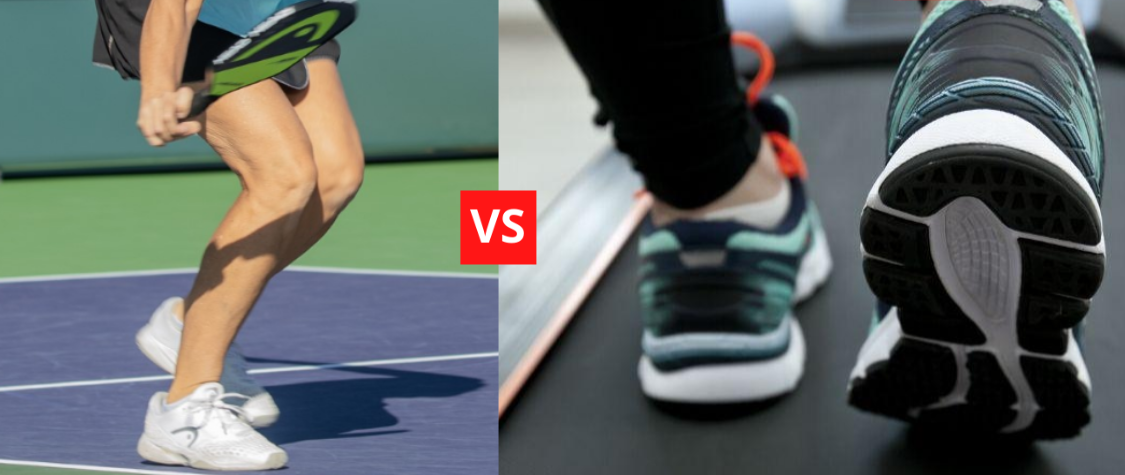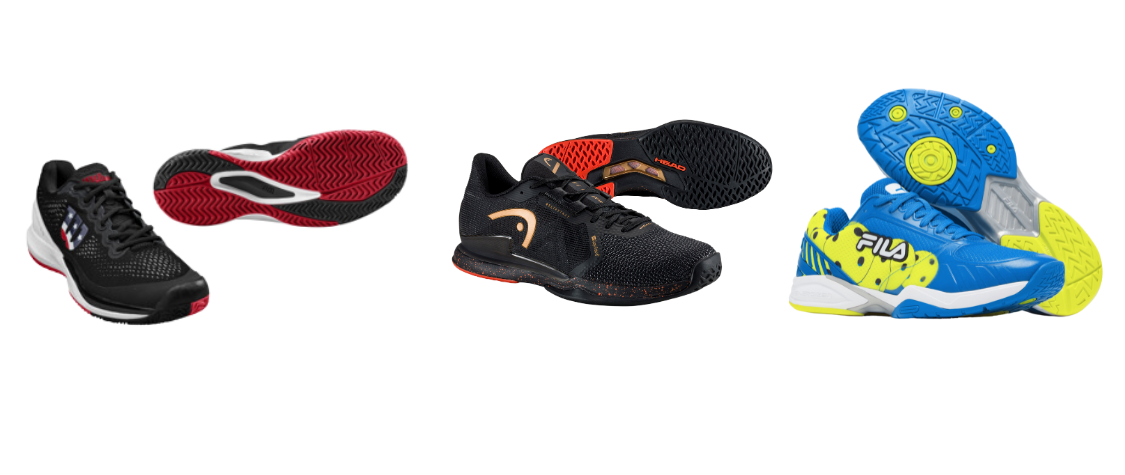Written by Kevin S., our in-house footwear expert and buyer
As pickleball continues to be one of the fastest growing sports we also see players evolve in their preference of gear. Just as many of us started playing with a wooden paddle until we saw the light and realized how much more control we got out of a composite paddle, we owe it to our feet to show them a similar jump in quality by switching out of a running shoe and putting on footwear specific to our sport. While there are no promises on an immediate improvement to your third shot drop with a pair of pickleball shoes on vs your typical running shoe, court shoes do provide improvements to stability, durability, and most importantly a reduced injury risk.

Let us start with the name: Is there a difference between a pickleball shoe, a tennis shoe, or a court shoe?
Easy answer here: No! You may have heard a few different terms used to describe the shoes you should wear while playing pickleball. The differences between them exist in name alone. As you may be aware, most people play pickleball on the same surface as a tennis court; with a big overlap in the range of motion needed from our footwear for each sport. Any tennis shoe is going to equip you perfectly for pickleball. For those who play on an indoor gym surface, a gum rubber shoe or a standard pickleball shoe are both suitable. Sometimes the term tennis shoe will refer to a general athletic shoe, so in place of this court shoe may be used to describe the footwear used for the sport. There is no reason so switch out of a tennis shoe and into a pickleball shoe, but many reasons to switch out of a trainer or running shoe and into a pickleball/tennis/court shoe.

Breaking down the benefits
Every running shoe and most trainers are designed for a limited range of motion: to go forwards and backwards. In pickleball almost every point is played with a great deal of lateral movement. Being able to pivot is very critical, and pickleball shoes are designed for just that. Putting your weight into the ball of your foot and trying to pivot left or right in a running shoe is fighting against the design of the shoe’s midsole, toe box, tread, and outsole. Losing this fight occurs when you twist your foot and instead of allowing this motion while keeping your foot stable, the shoe tips over and caves, easily leading to an ankle injury. You will often hear the term “stability” used with pickleball shoes and the idea is they allow for a range of motion, twisting, and pivoting while keeping your foot level and stable, avoiding risk of turning an ankle. A few design details help accomplish this goal.
- Tread
The tread on the bottom of a pickleball shoe is most frequently a herringbone design, a term used to describe the squiggly pattern that lines the bottom of the shoe under the forefoot and heel. The tread of the shoe needs to allow you to start and stop quickly, pivot, lunge, backpedal, and exert your weight over many parts of the shoe. This is different from a running shoe that is designed for your weight to transfer only from your heel or midfoot to your toes in a natural running stride.
- Stability Shank
To aid in keeping your foot stable, pickleball shoes feature a plastic shank that runs between the cushioning of your heel and the outsole. This shank runs from the back of the shoe up to about the forefoot and is visible from each side of the shoes and underneath. Some shoes also feature an additional plastic heel counter that restricts movement even further from your heel and ankle, a key component for anyone with prior ankle injuries looking for the most secure pickleball shoe they can get.
- Drop
Running shoes often feature a slant called a heel toe drop, where the heel of the shoe is higher than the toe box. Most pickleball shoes feature close to a zero millimeter heel toe drop to allow you to pivot on your heels or forefoot without your weight being entirely distributed in one area or the other. This flat, low to the ground effect makes it hard to find a pickleball shoe with much arch support. A completely flat shoe is easier to pivot in than one with a heightened arch. Knowing many people require additional arch support to compensate for pronation, supination, or plantar fasciitis issues, all the insoles in pickleball shoes are removable, and able to be swapped with your own support insoles. We sell two insoles from Zelus, the Olympus Pro and Olympus Lite
that offer a great combination of heightened arch support and cushioning. For someone needing a shoe with high arch support it is much safer to wear a pickleball shoe and put in a support insole rather than wearing a running shoe featuring a high arch.
- Outsole
Another component of a pickleball shoe is the rubber used for the outsole that ensures durability over frequent use. This rubber is harder than the rubber in most athletic shoes and should stand the test of time against play and wear down at a much slower rate than a non-pickleball shoe.
Between a plastic shank and the hard rubber used to ensure durability pickleball shoes might not be as plush or soft as a running shoe but the benefits in stability, injury prevention, durability, and increased range of motion far outweigh the softer materials of a running shoe.
How to pick a pickleball shoe?
Every pickleball shoe will offer heightened stability, durability, and comfort compared to a normal athletic shoe. Pickleball shoe brands will often offer a very supportive and stable option as well as a lighter weight more comfort-oriented shoe. There are pros and cons to each and picking the one that fits your style of play is important. Using a lighter weight and softer rubber typically brings down the durability of a shoe. Adding a plastic heel counter for added support usually makes the shoe heavier overall. At the bottom of our Men’s and Women’s shoe pages is a shoe guide that lists information about each shoe that will help guide you in this decision.
Here you will see:
- A classification of each shoe: Lightweight, Comfort, Durability, and Stability being the options
- The weight of the shoe
- The toe box width
- Whether the shoe features a 6-month durability guarantee
As important as style is, we should consider these additional aspects of each shoe to pick the best pair for our pickleball needs.
To summarize
It takes little time to realize the benefits of upgrading from your first paddle; we should be aware of a similar improvement we can bring to our game by upgrading our footwear. You do not want to switch to a proper shoe only after you have experienced a predictable injury playing pickleball in a running shoe. It is not a piece of equipment reserved for the pro players while the rest of us are not good enough to feel the differences. Hopefully after reading along you understand the technology and differences in material used to construct a pickleball shoe and what benefits each component brings. Each brand makes pickleball shoes with different components all including a similar foundation. HEAD makes shoes with exceptional ventilation with their Sprint Pro, Revolt Pro, and Revolt EVO models. Wilson makes a shoe that sits as one of the most comfortable we carry while also being the lightest out of our lineup with their Kaos Swift. Babolat offers a wider fitting shoe with a very durable outsole with their SFX 3. K-Swiss has been a best-seller due to its elevated comfort, weight, and durability in their Express Light model. If you are curious at all of the differences between the shoes we offer or are looking for advice on how to select the shoe that will fit your game best, our customer service team is well trained to handle any and all inquiries to help make your buying experience easier. Stay tuned for more shoe content to come!
Share Product:
SHARE THIS:


